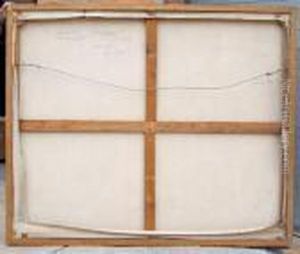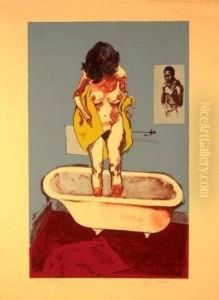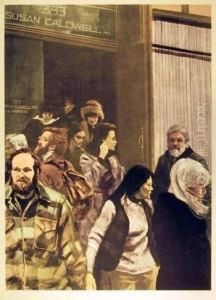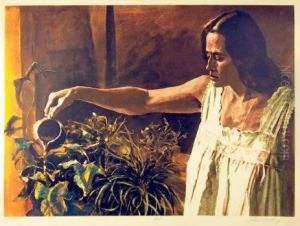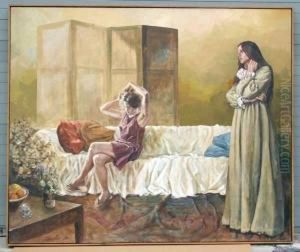John Vardy Paintings
John Vardy was an English architect and architectural draughtsman, known primarily for his work in the Palladian style, which was popular in Britain in the mid-18th century. Born in 1718, Vardy was associated with some of the period's most significant architectural projects and figures.
Vardy's architectural education and early career are not thoroughly documented, but it is known that he worked under the prominent architect William Kent, who was a leading proponent of the Palladian style in England. Kent's influence is evident in Vardy's work, and after Kent's death in 1748, Vardy took over some of his master's commissions.
One of Vardy's most notable works is Spencer House in London, which he designed for John Spencer, an ancestor of Diana, Princess of Wales. Spencer House is considered one of the finest surviving 18th-century townhouses in London. Vardy was also involved in the design and building of Horse Guards at Whitehall, which is one of the iconic buildings of London. He worked on this project with another architect, William Kent, and it remains one of the most significant examples of Palladian architecture in England.
In addition to his architectural work, John Vardy published a book of engravings titled 'Some Designs of Mr. Inigo Jones and Mr. William Kent' in 1744. This book helped to disseminate the Palladian style and contributed to Vardy's reputation.
Despite his contributions to British architecture, Vardy's career was relatively short. He passed away in 1765, at the age of 47. Though not as widely remembered as some of his contemporaries, Vardy's work remains an important part of the architectural history of the Palladian movement in England. His buildings and designs continue to be studied and appreciated for their elegance, proportion, and adherence to classical principles.
